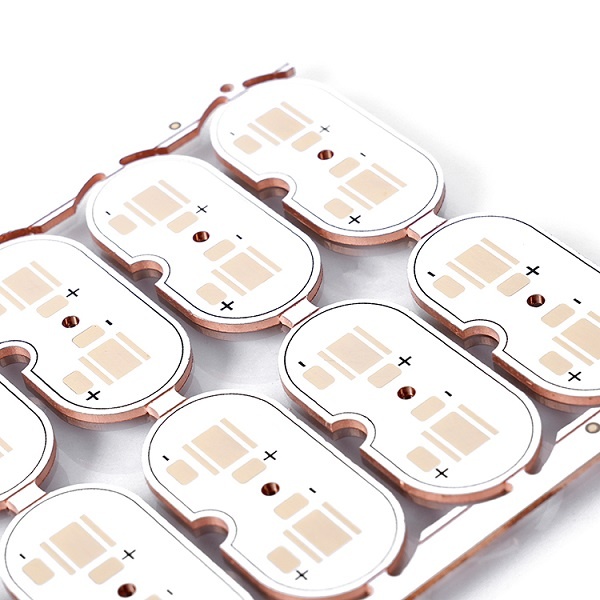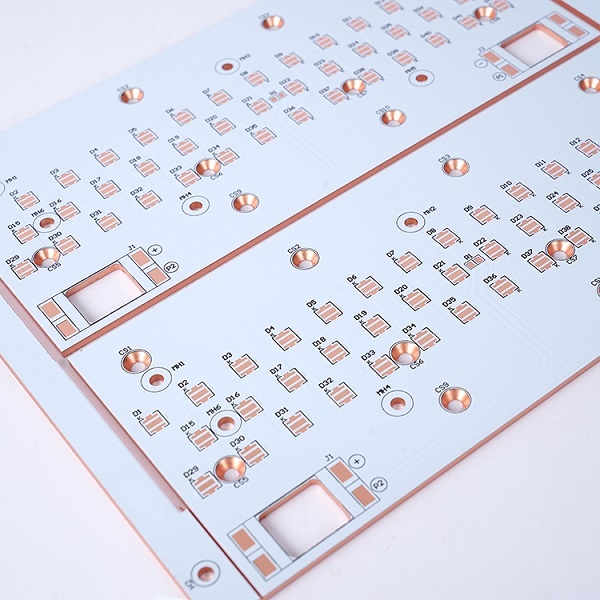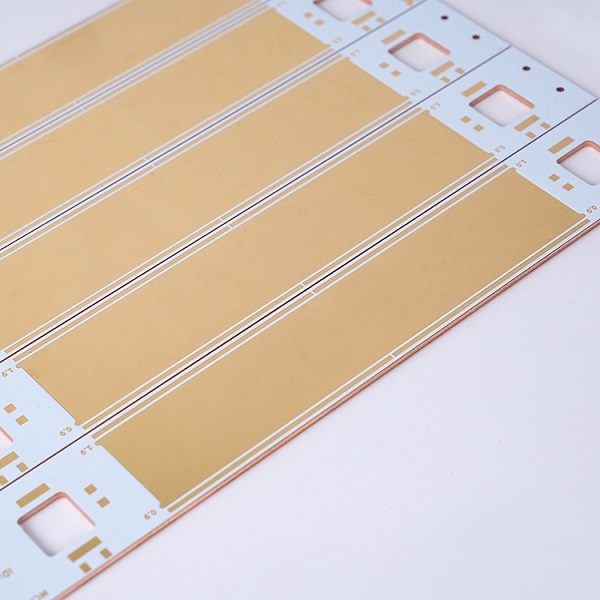Why Are Metal Core PCBs, Especially Copper Core, Used In Heat-Sensitive Electronics?
- Views
- 15 Apr 2024
As electronic devices become more powerful and complex, effectively managing the heat they produce becomes increasingly critical. Metal Core PCBs, short for MCPCBs, particularly those with copper cores, are essential innovations for thermal management in electronics. In this blog, we would like to highlight the critical role of copper core PCBs in enhancing both the performance and longevity of electronic devices through effective heat management.
Why are the Importances of Heat Management?
PCBs are the platforms that enable the miniaturization of electronic circuits, allowing for the development of compact and advanced devices. However, these active circuits generate heat as a byproduct, which can diminish performance, reduce reliability, and shorten the lifespan of electronic components if not managed correctly. Traditional cooling solutions like heatsinks, cooling fans, and thermal pads, although effective, often add unnecessary bulk and complexity to devices. This limitation has led to the integration of thermal management features directly into PCBs, a role admirably filled by Metal Core PCBs.

What a Metal Core PCB is and Why Choose it?
Metal Core PCBs differ from standard FR4 PCBs by incorporating a metal as the base, typically made of aluminum or copper, at their base. This metal core acts as a heat spreader, helping to dissipate the thermal energy generated by the components mounted on the board. While aluminum cores are recognized for their cost-effectiveness and decent thermal performance, copper cores are superior due to their excellent thermal conductivity. For example, copper's thermal conductivity is about 400W/(m·K), compared to aluminum’s 237W/(m·K), making copper nearly 70% more effective at conducting heat.
The exceptional thermal conductivity of copper directly translates to enhanced heat dissipation capabilities for copper core PCBs. This efficiency means that heat is more evenly distributed across the surface of the PCB and away from heat-generating components, significantly reducing hot spots. This uniform heat distribution is crucial in applications like high-brightness LED lighting and high-power transistors, where excessive heat can lead to failure or suboptimal performance. In these scenarios, copper core PCBs not only enhance component performance but also prolong operational lifespan by mitigating thermal stress.
Additionally, for high power heat-sensitive applications, thermoelectric separation copper-based PCB is the best way to choose. It is a special metal core PCB that made by copper material, and transfer the heat out through a small convexity. The convexity is directly touched the thermal pad and can dissipate the heat generated by components in a very short time.

What are Benefits of Using Copper Core PCBs in Heat-Sensitive Electronics?
Copper core PCBs signify a significant advancement in electronic design, particularly in the area of thermal management. With superior thermal conductivity, copper core PCBs efficiently dissipate heat, safeguarding component performance and extending device lifespans. But except this, using copper core PCBs in heat-sensitive electronics offers some other benefits, including:
Reliability and Longevity
Efficient heat management reduces thermal strain on components, thus enhancing their reliability and extending their lifespan. This is particularly crucial in mission-critical applications where failures can have significant consequences.
Compact Design
Effective heat dissipation allows for tighter component packing and slimmer designs, essential for modern, compact electronic devices. This efficiency in design is not only about aesthetics; it also enhances performance by shortening the length of electrical paths.
Environmental Impact
Improved thermal efficiency can decrease the need for additional cooling solutions, thus lowering energy consumption. Moreover, by extending the lifespan of devices, copper core PCBs help reduce electronic waste.
Stable Dimension
Copper based PCB has excellent dimension stability that aluminum PCB can not achieve, especial in some harsh environment like extreme high temperature. This is because copper material has very good hardness and lower coefficient of thermal expansion.

What are the Challenges and Considerations during Copper Core PCB Manufacturing?
Despite their advantages, adopting copper core PCBs presents challenges. The most significant is the cost; copper is considerably more expensive than aluminum, which can affect the overall cost of the PCB. Additionally, copper core PCBs require more complex manufacturing processes and equipment, increasing production costs. However, ongoing advancements in manufacturing technologies and techniques are gradually lowering these barriers, making copper core PCBs a more feasible option for a wider range of applications.
Although challenges such as higher costs and manufacturing complexity exist, copper PCB still be an invaluable part in the development of modern, heat-sensitive electronics. We believe as technology advances, the role of copper core PCBs in electronic design is set to become even more crucial, symbolizing the intersection of innovation, performance, and sustainability.
metal core pcb, mcpcb, copper core pcb, aluminum pcb, heat dissipation, led pcb, thermal management,
Related Blog
- What is Thermal and Electrical Separating Pad in Metal Core PCB?
- LED PCB Assembly Process: Step-by-Step Guide for Beginners
- Why Always Recommend White Solder Mask Black Silkscreen for Aluminum PCB?
- What Materials Are Commonly Used for Manufacturing Lighting PCBs?
- Everything You Should Know About Metal Core Circuit Board
- What Are the Differences Between Ceramic PCB, Metal Core PCB And Standard FR4 PCB?
- Why Choose Best Technology As Your MCPCB Manufacturer?
- What is LED Light Circuit Board and How to Make it?
- When is International Labour Day in 2024 and What are the Significances of It?
- How Does A Convexity Comes Out On Thermoelectric Separation Copper Based PCB?
- Why is Aluminum LED PCB Important for Indoor Growth Lights?
- Application of Metal Core Pcbs in the Development of LED Technology
- Why Choose White Solder Mask for Metal core PCB When Used In LED Devices?
- Understanding Aluminum LED PCBs in 1000w LED Grow Lights
- What Are the Advantages of Metal Core PCB? How to Choose?
- Automotive Light Copper Core Pcb Production Process—testing
- Why Are Metal Core PCBs, Especially Copper Core, Used In Heat-Sensitive Electronics?
- How do aluminum LED PCBs improve LED efficiency?
- What Are the Differences Between Regular and Thermoelectric Separation Copper-Base PCBs?
- Aluminum PCB VS FR-4 Performance Comparison



